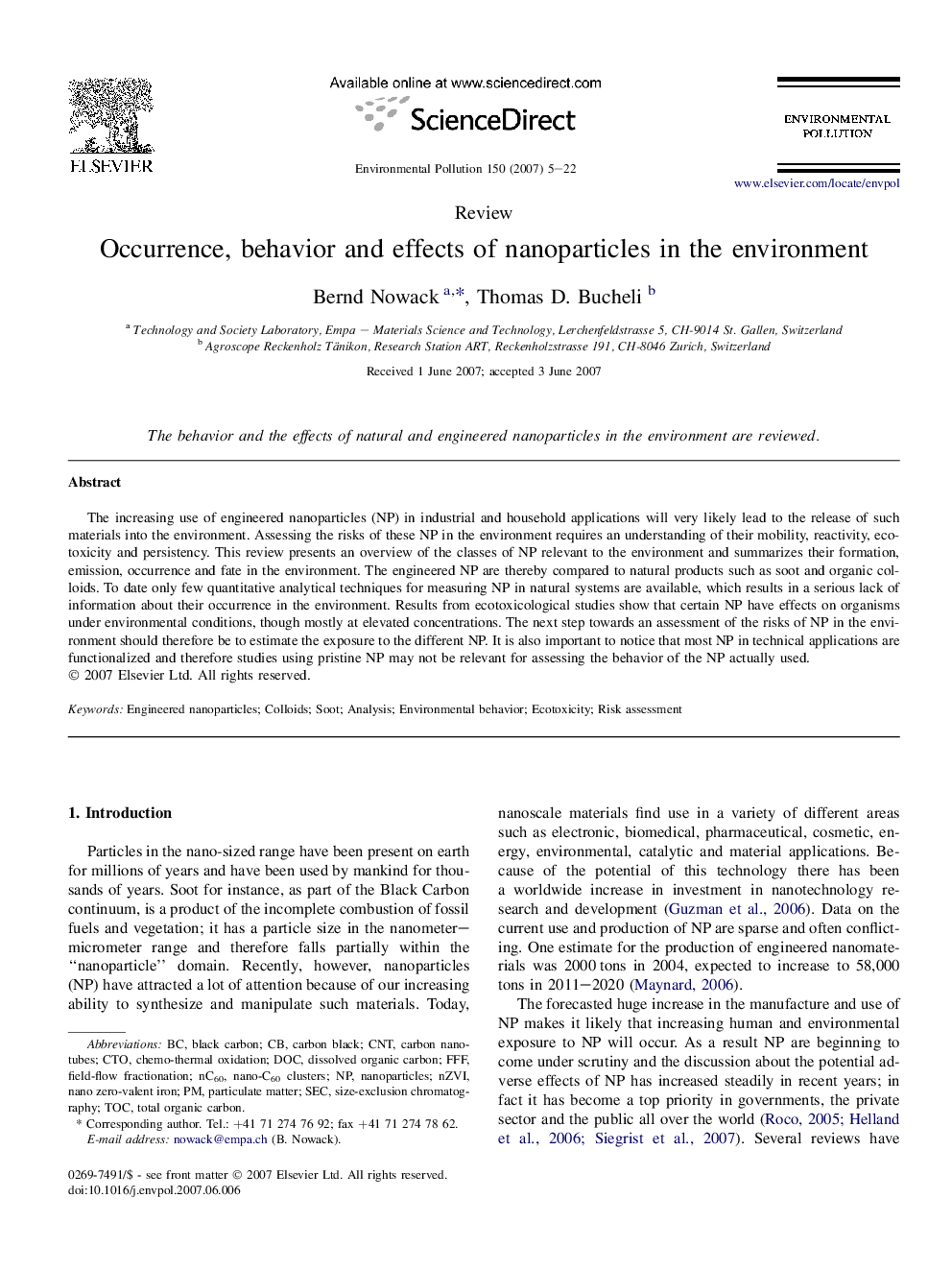| Article ID | Journal | Published Year | Pages | File Type |
|---|---|---|---|---|
| 4427261 | Environmental Pollution | 2007 | 18 Pages |
The increasing use of engineered nanoparticles (NP) in industrial and household applications will very likely lead to the release of such materials into the environment. Assessing the risks of these NP in the environment requires an understanding of their mobility, reactivity, ecotoxicity and persistency. This review presents an overview of the classes of NP relevant to the environment and summarizes their formation, emission, occurrence and fate in the environment. The engineered NP are thereby compared to natural products such as soot and organic colloids. To date only few quantitative analytical techniques for measuring NP in natural systems are available, which results in a serious lack of information about their occurrence in the environment. Results from ecotoxicological studies show that certain NP have effects on organisms under environmental conditions, though mostly at elevated concentrations. The next step towards an assessment of the risks of NP in the environment should therefore be to estimate the exposure to the different NP. It is also important to notice that most NP in technical applications are functionalized and therefore studies using pristine NP may not be relevant for assessing the behavior of the NP actually used.
